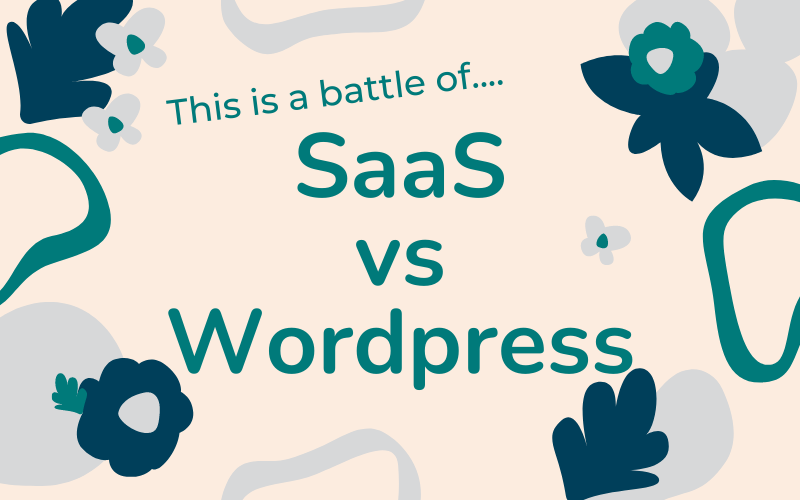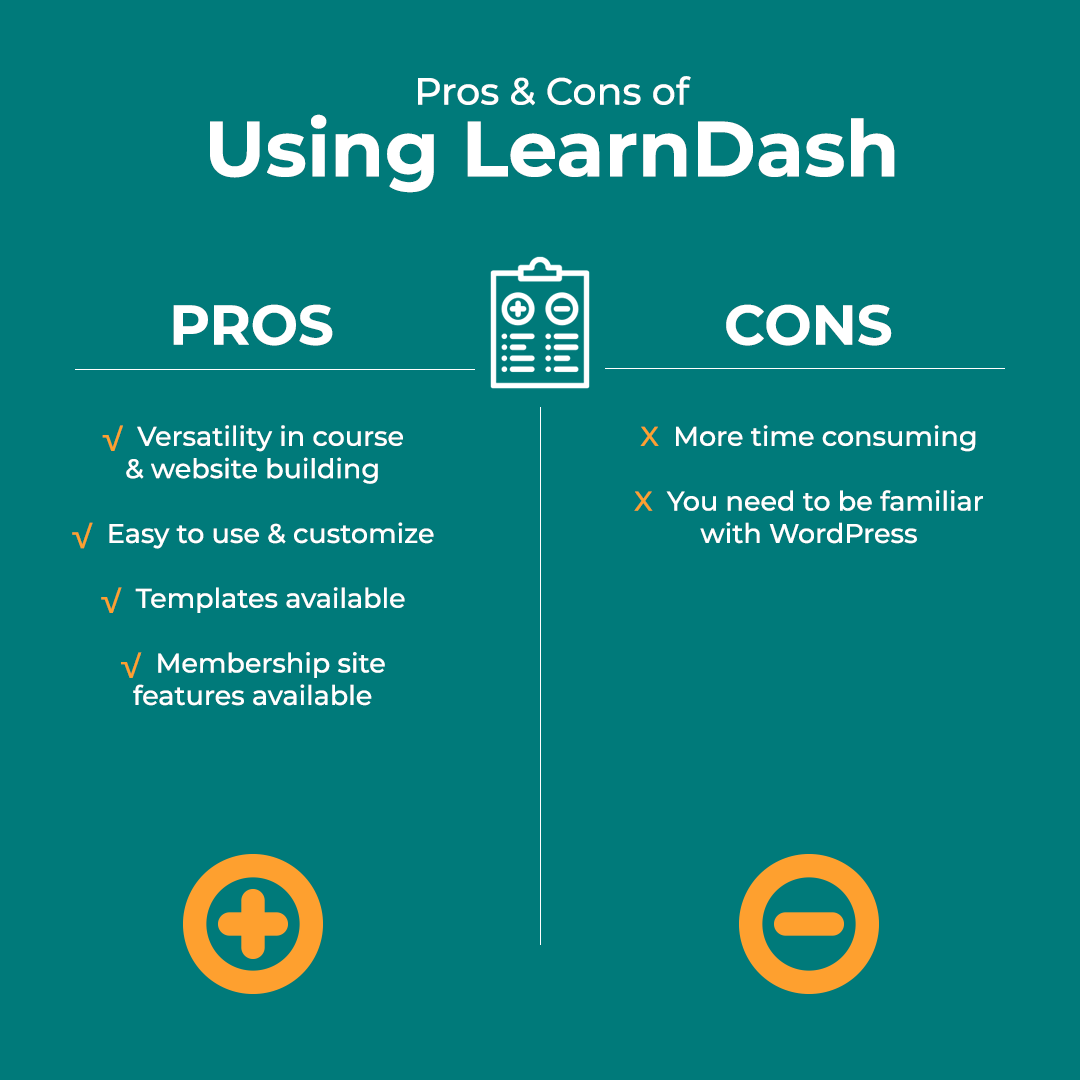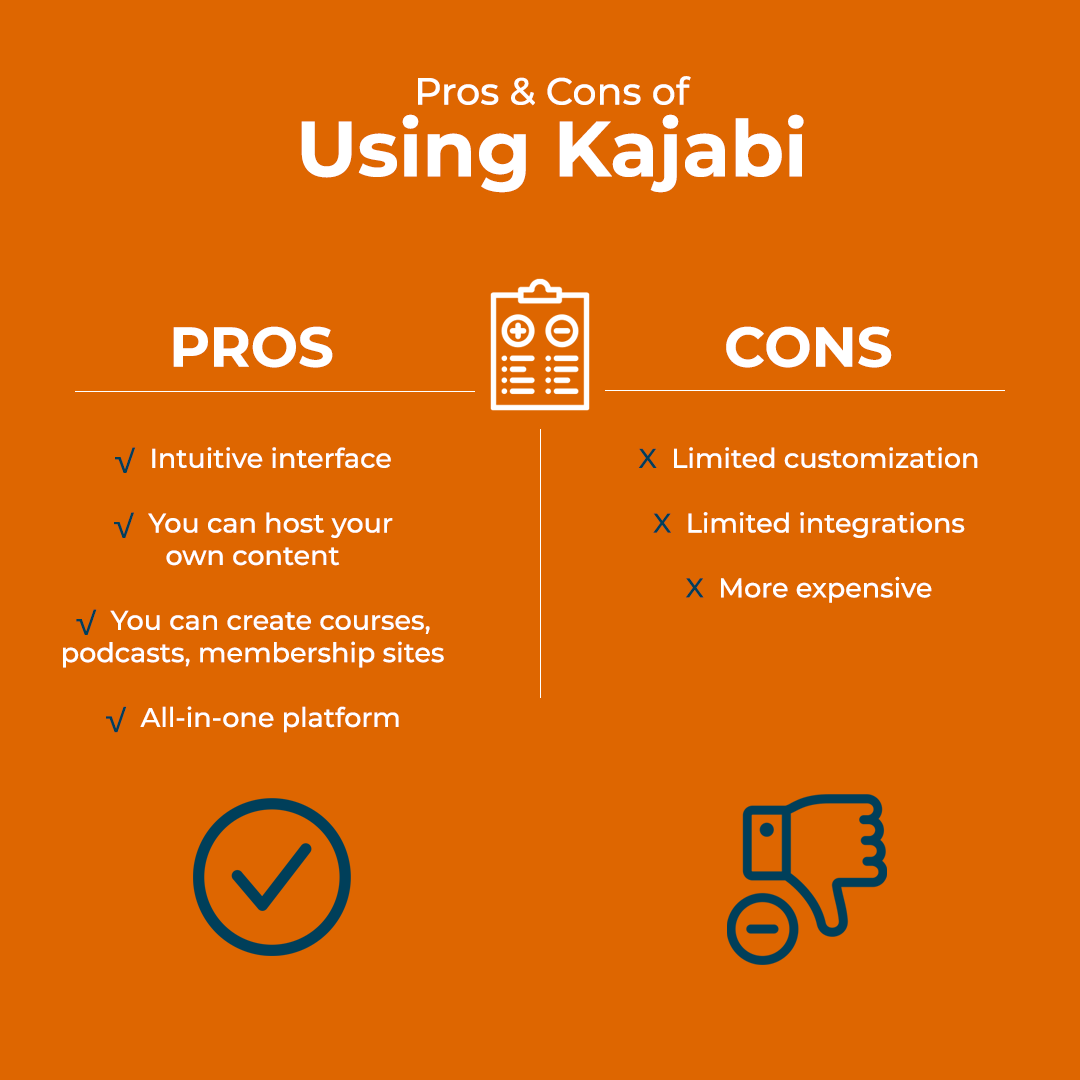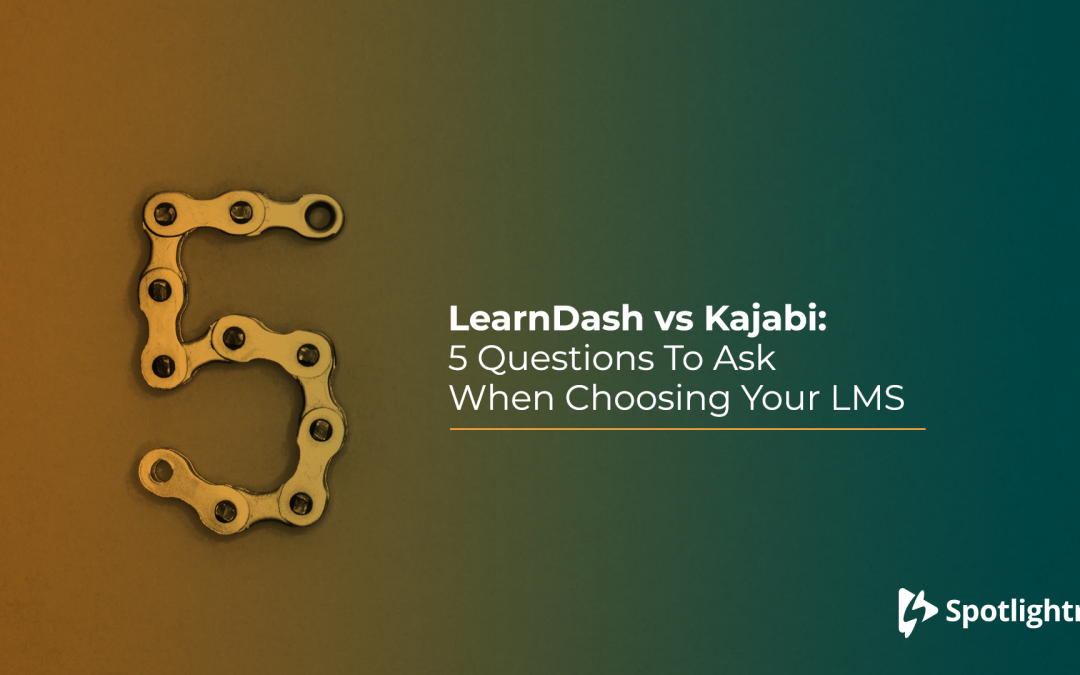Creating an online course requires more than just crafting compelling content. A successful course also depends on the platform you use to deliver it. Your LMS (learning management system) should align with your goals, whether they focus on engaging students, streamlining operations, or scaling your business.
LearnDash and Kajabi are two popular LMS platforms, each designed for different needs. LearnDash prioritizes education and offers advanced tools and customization to help educators create in-depth learning experiences. Kajabi takes a broader approach by integrating course creation with marketing, sales, and business management in a seamless all-in-one platform. By comparing their features, pricing, usability, and support, this guide will help you decide which platform best fits your vision.
Overview of LearnDash vs. Kajabi
LearnDash gives course creators complete control over their learning experience. It operates as a WordPress plugin and taps into the vast WordPress ecosystem of themes and plugins for unlimited customization. LearnDash provides tools for structuring content, assessing learners, and engaging them with gamification. This makes it a favorite among educators and businesses prioritizing high-quality course delivery.
Kajabi offers a unified platform for creating, marketing, and selling digital products like courses, memberships, and coaching services. Its all-in-one design eliminates the need for third-party integrations and simplifies operations for entrepreneurs who need a streamlined approach. While Kajabi focuses on ease of use, its educational tools may feel limiting to creators seeking more advanced features.

Key Features Comparison
Both platforms excel in different areas by tailoring their tools to unique user needs. LearnDash provides depth and flexibility for education, while Kajabi streamlines the business side of course creation.
LearnDash: Built for Advanced Education
– Unlimited Course Creation: Scale your business with no cap on courses.
– Comprehensive Assessments: Develop quizzes, assignments, and certifications to challenge learners and measure progress.
– Structured Learning Paths: Use prerequisites and drip content to create a logical flow through your courses.
– Gamification Tools: Motivate students with points, badges, and leaderboards to drive engagement.
– WordPress Integration: Customize your platform with thousands of plugins and themes.
Example: A company offering professional development courses can use LearnDash to create modules for different industries, complete with certification for employees who pass the final exam.
Kajabi: Streamlined for Business Efficiency
– Integrated Marketing Tools: Manage email campaigns, landing pages, and affiliate programs with no need for external software.
– User-Friendly Design: Use the intuitive drag-and-drop builder to create and organize course content.
– Product Versatility: Sell courses, memberships, coaching, or even physical products from a single platform.
– Mobile Compatibility: Offer courses via the Kajabi app or a branded app to provide on-the-go learning.
– Pre-Sales Capabilities: Generate interest and revenue before officially launching your courses.
Example: A fitness coach can use Kajabi to sell online training programs, upsell one-on-one coaching packages, and run email campaigns—all from a single dashboard.
Course Creation Capabilities
Course creation tools form the backbone of any LMS. LearnDash delivers flexibility and depth for educators creating structured content, while Kajabi simplifies the process for those who prioritize ease of use and speed.
LearnDash: Tailored for Educators
LearnDash empowers course creators with tools to design highly structured and detailed content. The drag-and-drop builder allows for easy organization of lessons, quizzes, and topics. Features like drip scheduling ensure learners progress at a steady pace, while prerequisite courses maintain a logical learning order.
Example: A language instructor can create a structured course with beginner, intermediate, and advanced levels. Students must complete earlier levels before accessing more advanced content.
LearnDash’s integration with WordPress also gives creators access to thousands of plugins for additional functionality. For example, you can use WooCommerce to manage course payments or BuddyPress to create a community forum for students.
Kajabi: Simplified for Entrepreneurs
Kajabi prioritizes simplicity, offering a drag-and-drop builder with integrated hosting for video lessons and downloadable content. Its user-friendly interface appeals to creators who want to launch courses without extensive technical expertise.
While Kajabi provides tools like quizzes and progress tracking, it doesn’t offer the depth of LearnDash’s educational features. This trade-off works well for creators who prioritize ease of use and faster setup over intricate course structures.
Example: A lifestyle blogger can quickly design a course on meal planning, combining video tutorials, downloadable templates, and progress tracking, all within Kajabi’s streamlined platform.
Marketing and Sales Tools
Marketing tools are essential for driving course sales and growing your audience. LearnDash and Kajabi take different approaches to marketing that cater to their respective strengths.
LearnDash: Flexible with Third-Party Integrations
LearnDash doesn’t include built-in marketing tools but integrates with powerful external platforms like Mailchimp, ConvertKit, and HubSpot. These integrations allow creators to run sophisticated email campaigns, automate workflows, and analyze customer data. The flexibility of LearnDash lets creators customize their marketing strategy to suit specific needs.
Example: A corporate trainer can use LearnDash alongside HubSpot to track leads, nurture them through email campaigns, and convert them into paying students.
Kajabi: Comprehensive Built-In Marketing
Kajabi provides an all-in-one solution for marketing and eliminates the need for third-party tools. Its email marketing, landing pages, and sales funnels are built directly into the platform, making it easy for users to manage their entire marketing process. Additional features like affiliate management and checkout pages streamline operations further.
Example: A personal finance coach can use Kajabi to set up automated email sequences that lead potential customers to a free webinar. The platform then guides attendees to purchase a full course using pre-built landing and checkout pages.

LearnDash vs. Kajabi Pricing
Pricing plays a significant role in selecting an LMS. LearnDash offers cost-effective plans for educators on a budget, while Kajabi’s higher pricing reflects its extensive features and business tools.
LearnDash: Affordable for Educators
LearnDash offers a straightforward pricing structure, starting at $199 per year for its base plan. The LearnDash Cloud plan, priced at $299 per year, bundles hosting and WordPress CMS into a single package. These affordable options make LearnDash an excellent choice for educators and small businesses.
With its WordPress integration, LearnDash also supports a variety of payment models, including one-time purchases, memberships, and subscriptions.
Kajabi: Premium Pricing for All-in-One Convenience
Kajabi’s pricing starts at $119 per month when billed annually. Its plans range up to $399 per month, unlocking advanced features like expanded product limits and more robust automations. The Basic plan limits users to three products, which may require an upgrade as your offerings grow.
While Kajabi’s pricing is higher than LearnDash, its comprehensive features justify the cost for creators who want to manage all aspects of their business on one platform.
User Experience: Control vs Accessibility
The user experience of an LMS determines how easily creators can set up and manage their courses. LearnDash provides control and customization, while Kajabi focuses on simplicity and accessibility for users of all skill levels.
LearnDash: Designed for Customization
LearnDash gives users full control over their courses and their website’s design. The Focus Mode feature eliminates distractions to ensure learners stay engaged. However, using LearnDash within WordPress requires some technical knowledge, especially when managing plugins and themes.
Kajabi: Built for Simplicity
Kajabi offers an intuitive interface with step-by-step guidance for setting up courses, marketing campaigns, and memberships. Its mobile-friendly design ensures learners can access content from any device, which enhances engagement. This ease of use makes Kajabi a great option for creators who prefer a hands-off approach to technical details.
Student Engagement and Assessment
Engaging students and evaluating their progress is vital for any online course. LearnDash excels with advanced tools like gamification and quizzes, while Kajabi provides basic but effective options for simpler needs.
LearnDash: Advanced Engagement Tools
LearnDash supports interactive learning with features like quizzes, assignments, and gamification. These tools motivate students to complete courses while providing instructors with detailed insights into their progress.
Example: A certification program can use LearnDash’s gamification features to reward learners with points and badges as they complete quizzes and assignments.
Kajabi: Simple but Effective
Kajabi provides quizzes and surveys for assessing learners, but it lacks the depth of LearnDash’s engagement tools. While these features meet basic needs, creators seeking advanced accountability measures may find Kajabi limiting.
Support and Community
Reliable support and community resources can make or break the user experience of an LMS. LearnDash fosters collaboration through forums and guides, while Kajabi offers personalized support and training resources.
LearnDash: Collaborative Community
LearnDash offers a supportive community forum where users share advice, troubleshoot issues, and exchange ideas. The platform also provides extensive documentation and video tutorials to help creators navigate its features.
Kajabi: Personalized Assistance
Kajabi prioritizes customer support, offering live chat, onboarding tutorials, and a library of resources. Its personalized guidance ensures users can quickly learn the platform and resolve issues.
E-Commerce and Payment Processing
Efficient payment processing ensures smooth sales for course creators. LearnDash provides flexibility with third-party integrations, while Kajabi simplifies payments through its integrated system.
LearnDash: Flexible Payment Options
LearnDash integrates with payment gateways like Stripe and PayPal, allowing creators to accept payments for one-time purchases, subscriptions, and bundles. This flexibility supports diverse business models but requires setup through third-party tools.
Kajabi: Seamless Built-In Payments
Kajabi simplifies payment processing with integrated tools that support various pricing options, including discounts, subscriptions, and one-time fees. Its centralized dashboard makes it easy to manage transactions and track revenue.
Which LMS Is Right for You?
Choose your LMS based on your goals and priorities. LearnDash delivers advanced educational tools, robust customization, and affordability, making it ideal for educators and small businesses. Kajabi offers a comprehensive business solution with marketing, sales, and product management tools, perfect for entrepreneurs scaling their online ventures. Understanding your needs will help you select the platform that best aligns with your vision for success.
But before we make any conclusions, let’s revisit a few things mentioned already and a few that weren’t. These platforms are very different and will cater to very different creators.
So what we did was looked at both tools and analyzed them from five main perspectives:
– How much customization can you make on the website and course?
– Does it have enough marketing tools or do you need separate tools?
– Do I have to be a “techie” to figure out how to set up my site and course?
– Are there any hidden costs? How much is everything included?
– What options do you have for video lessons? Can I use my own video hosting?
Additionally, we also took a closer look at the main pros and cons of LearnDash vs Kajabi, so you can better navigate the features that are most important to you.

The creator economy is growing faster than ever before, and putting out online courses is a huge part of it all. If you’re in the market for a good course creation tool, LearnDash vs Kajabi is a comparison you’ll most likely want to make.
These platforms are very different and will cater to very different creators. Once you go through this article you will understand why and have a really good understanding of which one is a better fit for you.
We’ve looked at both tools and analyzed them from five main perspectives:
– How much customization can you make on the website and course?
– Does it have marketing tools or do you need separate tools?
– Do I have to be a “techie” to figure out how to set up my site and course?
– Are there any hidden costs? How much is everything included?
– What options do you have for video lessons? Can I use my own video hosting?
Additionally, we also took a closer look at the main pros and cons of LearnDash vs Kajabi, so you can better navigate the features that are most important to you.
Question 1: Customization
Let’s talk about customizing the website in general and course pages specifically in regards to these two platforms. You need a tool that will allow you to personalize them and match them with your established or soon-to-be established brand, so looking at how customizable LearnDash vs Kajabi are is going to be one of your first priorities.
Here are some key notes to keep in mind about each:
LearnDash
Because LearnDash is a WordPress plugin and build for WordPress, it’s a drag & drop, no-code tool. WordPress has thousands of themes available to choose from when you want to get a start on the look and feel of your website. And with the thousands of plugins that are available, your no-code customization options are huge.
It will also allow you to customize your courses with tons of options, down to the smallest of details, with just the use of plugins and other WordPress options. This will satisfy most people’s design requirements.
And if you really want something very specific or custom, it can easily be accomplished with some basic coding.
You can do a lot with just the “code-free” options that LearnDash and WordPress provide, so if you don’t know how to code this tool will still be a great option.
Kajabi
An easy drag and drop interface will take you a long way in customizing your website built on Kajabi. They do offer some themes to choose from, though not thousands like WordPress, and even their pages that you build inside the themes have templates as well. They are well designed and well optimized and drag and drop.
If there isn’t anything that isn’t quite perfect for you, then you can edit the code. Just keep in mind that it does require their highest priced account.
Who wins the customization battle? We’ll have to go with LearnDash with this one. It’s hard for any SaaS to beat anything built on WordPress since it’s open-source and has thousands, if not hundreds of thousands, plugins already developered for it.
Question 2: Marketing
Building a course is one thing. Making sure people..
– Come back
– Complete each module
– Tell other people about it (or at least review it)
… is an entirely different affair.
As such, you will definitely want to look into the marketing options LearnDash vs Kajabi offer.
LearnDash
Although LearnDash may not connect with a lot of marketing tools as native integrations, they do provide you with the option to connect your courses with email marketing tools and CRMs via other 3rd party WordPress plugins.
In essence, they do the trick: they help you build a bridge between your courses and the marketing tools you want to use, so you can up-sell to your students, keep them in the loop, and encourage them to evangelize your content.
Kajabi
Kajabi is rather limited in it’s direct integration with other tools, but they do integrate with Zapier. So if push comes to shove you can probably get done what you need with Zapier.
The silver lining? Kajabi provides its users with a built-in email marketing tool with an intuitive visual builder and what they tout as “built-in best practices”. It also features a funnel builder and webinar software as well.
They also have tons of marketing training available which obviously showcase how to use their tools to their potential. So if you are looking for a platform that has just about everything there for you already, then Kajabi is for you.
If, however, you already have preferred tools and platforms that you want to use, then LearnDash is going to work better for you.
On the marketing tools front, LearnDash definitely wins for the wider range of 3rd party integrations and flexibility, but Kajabi wins for having everything built-in and ready to go. Because of the marketing tools and training Kajabi has in place already, we would give the edge to Kejabi in terms of marketing (especially if you are new to digital marketing).

Question 3: Technical Ability
Unless you’re a programmer, you want to use a course building tool that doesn’t ask too much of you in terms of technical skills. Here’s how both LearnDash and Kajabi behave here:
LearnDash
As you may already know, LearnDash is a WordPress tool. And as such, it’s perfect for people who want to be in full control of the technical side of their eLearning experience.
Each element (content areas, videos, quizzes) does come with its own settings panel so you do need to know your way around WordPress to take full advantage of the options. You don’t need to know how to code, but you do need to be somewhat computer literate.
Kajabi
Kajabi tries to make things as simple as possible for its users – and it does show. For example, when it comes to quizzes and assignments, you can choose between letting students submit their answers for grading automatically or manually. And if you want to add further customizations with HTML, CSS and Javascript code, Kajabi provides its users with a basic editor – although it’s not an IDE (Integrated Development Environment) that programmers are used to.
Who wins here?
Both tools are code-free. However, Kajabi is a more intuitive experience if you’re not a very technical person. If you’ve never used WordPress before, the learning curve with LearnDash will be much higher than Kajabi.
Question 4: Cost
Of course, you also want to know how much you’ll pay for LearnDash vs Kajabi (and what, more exactly, you’ll get for the money).
In short, this is how the pricing scheme of each tool breaks down:
LearnDash
There are three pricing tiers on LearnDash: $199/year for 1 site, $399/year for 10 sites, and $799/year for unlimited sites. Then there are optional add-ons that can be purchased separately all paid for annually. While not critical, there may be a few that you’d want. For example the reviews and feedback add-on is $49/year. Propanel which is analytics to track enrollment and monitor assignments is $99/year.
Kajabi
Kajabi also comes in four pricing tiers: Kickstarter ($89/month), Basic ($179/month), Growth ($2499/month) and Pro ($499/ month). They also have annual plans that get you a 20% discount over the monthly cost. You get unlimited landing pages and unlimited emails with all the plans, but what makes the difference between all the tiers are features such as:
– Number of products (i.e. courses) you can include on one account
– Number of pipelines
– Number of contacts
– Number of admin users
The lowest tier plan also has Kajabi branding, limited automations, and no chat support.
So, which one is more advantageous when you compare LearnDash and Kajabi?
Hands down LearnDash is more affordable. Of course affordable doesn’t mean better, but if cost is a top concern for you right now then LearnDash is the winner.
If you are an already established brand with an audience, and want something robust and easy to set up, then Kajabi is likely more in your wheelhouse.
Question 5: Video Hosting For Course Creators
Most courses are video-based, so it comes without saying that course builders like LearnDash and Kajabi will support video content. There are definitely differences you should be aware of.
LearnDash
Course creators using LearnDash will use third-party hosting for their video lessons. Yes, it’s possible to upload videos direct to WordPress Media but this is definitely not recommended.
And since it’s built on WordPress just about any HTML, CSS, and Javascript can be added without issue. Thus any third-party video hosting for courses will work well.
LearnDash’s Video Progression is a popular feature and has integrations with only a few providers, with Spotlightr being one of them.
Kajabi
As you might expect, Kajabi supports both uploading and using videos hosted on third party platforms (though technically when you upload to Kajabi you are using third party hosting as they partner with Wistia). If you upload directly to Kajabi it does have very basic stats and player functionality. The upload size limit is 4 GB as well.
If you need more customization, functionality and features (like how to brand video), as well as upload files bigger than 4 GB, you will need to use third party hosting.
The “video” category gives the slight edge to LearnDash because of its video progression feature.
LearnDash vs Kajabi Pros and Cons
Both LearnDash and Kajabi come with their own advantages and disadvantages. Here’s a quick rundown of both:

Pros of Using LearnDash
The main advantage of using LearnDash is its versatility. It can be used for a lot more than just courses – you’re able to build out a full-fledged website around your course and customize it however you want. It can truly be a unique brand experience.
The fact that it is a WordPress plug-in also makes it very easy to use and customize. With LearnDash, you can easily build your own courses from scratch or adapt premade templates (which are already available) to match your needs perfectly. For a comprehensive guide to LearnDash products, you can also create different types of membership sites, including subscription-based and one-time purchase memberships.
Cons of Using LearnDash
One of the main drawbacks of LearnDash is that it will take time to build out. You will need to become familiar with WordPress and the “Wordpress world” to be able to build out your course. And if you want to really take advantage of the flexibility of WordPress, you will need to be able to code or hire someone who does.

Pros of Using Kajabi
Kajabi has several advantages over its competitors, one of which being its intuitive interface. With Kajabi, you can easily upload and host your own content, create a course, podcast, or membership-based product with a few clicks. Everything that you need is already there, so you don’t have to go out and subscribe to and learn other tools to use in conjunction with Kajabi.
Cons of Using Kajabi
One potential downside of using Kajabi is that its customization is limited, and so are the native integrations it provides. It’s also quite expensive. However, if these are not issues for you and if you’re looking for the quickest, simplest way to create your course, Kajabi will more than earn its keep.
So…Which One’s the Best?
If you’re already using WordPress then LearnDash is probably the best option for you. You will be able to pick it up pretty easily and there are plenty of plugins available to customize it as you need.
And if you are on a budget then there is no question LearnDash is a better choice. Kajabi is far more expensive and once you stop paying you lose access to your course completely.
If, on the other hand, you are looking for an “all-in-one” solution that will get you up and running quickly then Kajabi will be the better choice. Just be aware that you will need to pay more for it. This will also probably work better for already well-established brands who just need a solution to facilitate any training or courses they need to add to their already established websites.
If you want to learn more about other learning platforms we’ve compared, check out our article on LearnDash vs Teachable. More coming soon!
FAQs
What’s the main difference between LearnDash and Kajabi?
LearnDash focuses on advanced educational tools and customization, while Kajabi combines course creation with marketing and sales in an all-in-one platform.
Which platform is more affordable?
LearnDash is more budget-friendly, starting at $199/year. Kajabi’s plans begin at $119/month, reflecting its premium features.
Which offers better student engagement tools?
LearnDash excels with its gamification features, certifications, and detailed assessments, making it better for fostering engagement.
Can I sell multiple products on these platforms?
Both support multiple product types, but Kajabi’s Basic plan limits users to three products.
What support options do they offer?
LearnDash provides community forums and documentation, while Kajabi offers live chat and personalized onboarding tutorials.
Free 14 Day Trial
Spotlightr has all the tools you need to secure your videos from piracy, keep your video content on-brand, and market your courses so you can sell more courses and increase enrollments.

